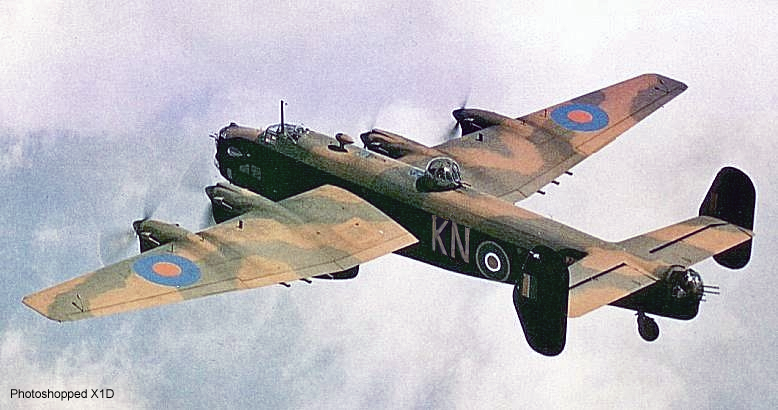25/26th May 1943




Background
This website concerns a single Allied raid on Germany on the evening/morning of 25/26th May 1943 during World War II.
What began as the story of the final flight of Halifax Bomber JB837 KN-D, its seven man crew, and the loss of four other allied aircraft by the actions of just one Nachtjagd (German Night Fighter), has grown until it now provides a minute-by-minute account of the entire raid.
I should make it clear that I am not a historian, and have no personal experience of the RAF or any of the armed services. However, the information in this website is provided in good faith and is believed to be accurate. The information is sourced from personal documents in my possession, from interviews with Service Personnel, civilians about their war experience, correspondence with relatives of those involved, from published works and the Internet.
Any errors, omissions or unintentional falsehoods can be corrected by contacting me at mail@prwg.co.uk
The genesis of this site was the discovery of a wartime letter dated 22nd May 1943 from an airman, John Walton Richardson, to my Aunt Jane Johnson, found among her possessions after her death in 2005. John (or Walton as his family preferred) was already dead by the time Mrs. Johnson received the letter. I determined to discover as much as I could about the circumstances of his death, and this website is the result.

Summary
Halifax Bomber Mk II, Serial No: JB837 was based at RAF 77 Squadron, Elvington near York with the X1D (Identification) of KN-D. It took off from Elvington on 25th May 1943 (airborne at 23.30) on a bombing mission to Düsseldorf, part of a campaign known as “The Battle of the Ruhr”.
It was shot down at 01.51, 1km south of Jülich, a small town west of Köln (Cologne), by a Messerschmitt Bf110 night-fighter (ID G9+AC) flown by the German fighter ace, Major Walter Ehle, while on its way to the target at an altitude (according to Ehle’s log) of 4800 metres (15,700 feet) [1].
The Halifax was capable of flying higher than this, but was possibly maintaining this altitude because it was in the slot allocated to it in the base of the bomber stream: it was virtually the operational ceiling of the accompanying Stirling bombers. The aircraft exploded with such force that two Stirling bombers flying close by were destroyed following the blast.
The three aircraft were credited as Walter Ehle’s 18th, 19th and 20th “kills”, although he had not seen the two Stirlings, let alone fire at them, and only became aware of the fate of the Stirlings a few days later.
Four minutes later, he did claim another Stirling (EH887 HA-Z) at 01.55, 8km east of Jülich at 4500 metres, and forty minutes later, a Wellington HE699 AS-M flying out of Kirmington at 02.35, 3km north of Nederweert at 3500 metres.[Some sources wrongly credit this to another Night Fighter. A Flak battery also claimed this kill, but the Abschuss Kommission (Victory Accreditation Board) of the OKL/RLM declared Ehle's claim as anerkannt (confirmed)]. [1].
The bulk of the wreckage of Halifax JB837 fell between Jülich and Elsdorf. All seven crew were buried by the Germans in Koln-Zollstock, but relocated to Rheinberg War Cemetery after the war.
One Stirling brought down by the blast from Halifax JB837 was EF361 MG-B of 7 Squadron, piloted by Pilot Officer Joseph Berthiaume [1]. It came down 2km south of Jülich. It had taken off from Oakington at 23.57. All seven crew perished and were buried at Koln-Sud, but were also relocated to Rheinberg.
The second Stirling brought down by the blast was BF534 LS-L of 15 Squadron, based at Mildenhall. It had taken off at 23.57, piloted by Flying Officer Ivan Thomson, and crashed between Jülich and Gut Lorsbeck.
All 21 aircrew from the three bombers destroyed in the Halifax blast now rest together in the same row of graves in Rheinberg (Plot 4, Row D).
The raid itself was deemed a failure by Bomber Command. 759 aircraft took part in the raid: 323 Lancasters, 169 Halifaxes, 142 Wellingtons, 113 Stirlings, 12 Mosquitoes.
27 aircraft (nine Lancasters, four Halifaxes, six Wellingtons, and eight Stirlings) were lost according to Bomber Command Night Raid Report No. 337 of 10th August 1943 (3.6% of the force) but in fact 28 aircraft were lost (seven Wellingtons).
There were two layers of cloud over the target and the Pathfinders experienced problems in marking it. It is believed that the Germans were also operating decoy markers and fire sites. The result was that the Main Force bombing was scattered over a wide area.
A note on timings
In May 1943, England was operating on “Double British Summer Time” (DBST) which was Greenwich Mean Time + 2 hours (GMT+2), which coincided with Middle European Time (MET) in Germany and Belgium at the time of the raid, so times provided by English and German sources are the same.
Peter R W Grundy 2005 - 2024